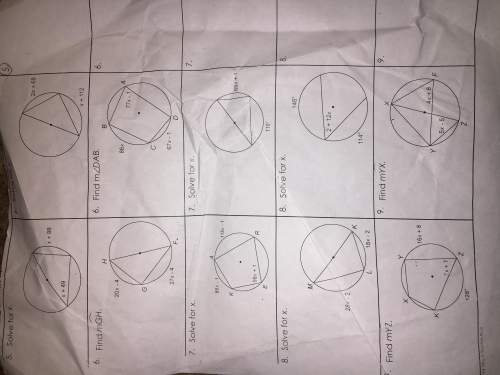
Mathematics, 02.06.2020 17:57 trobbie817
In snapdragons, variation in flower colori determined by a single gene (Hartl and Jones 2005). RR individuals are red, Rr (heterozy- gous) individuals are pink, and rr individuals are white. In a cross between heterozygous individuals, the expected ratio of red- flowered:pink-flowered:white-flower ed off- spring is 1:2:1.
a. The results of such a cross were 10 red-, 21 pink-, and 9 white-flowered offspring. Do these results differ significantly (at a 5% level) from the expected frequencies?
b. In another, larger experiment, you count 100 times as many flowers as in the experiment in part (a) and get 1000 red, 2100 pink, and 900 white. Do these results differ significantly from the expected 1:2:1 ratio?
c. Do the proportions observed in the two experiments [i. e., in parts (a) and (b)] differ? Did the results of the two hypothesis tests differ? Why or why not?

Answers: 2


Another question on Mathematics

Mathematics, 21.06.2019 16:00
Find the greatest common factor of the polynomial: 10x^5+15x^4-25x^3 10x^5 x^3 5x^3 5
Answers: 2

Mathematics, 21.06.2019 18:00
How many triangles can be drawn with side lengths 4 centimeters, 4.5 centimeters, and 9 centimeters? explain
Answers: 1

Mathematics, 21.06.2019 22:10
Which of the following circles have their centers in the third quadrant?
Answers: 2

Mathematics, 21.06.2019 23:00
Of the 304 people who attended a school play, 5/8 were students. how many of the people who attended were students.
Answers: 1
You know the right answer?
In snapdragons, variation in flower colori determined by a single gene (Hartl and Jones 2005). RR in...
Questions

History, 16.01.2021 18:20



Business, 16.01.2021 18:20



Chemistry, 16.01.2021 18:20

Spanish, 16.01.2021 18:20


Mathematics, 16.01.2021 18:20

Mathematics, 16.01.2021 18:20

Mathematics, 16.01.2021 18:20


Advanced Placement (AP), 16.01.2021 18:20

Mathematics, 16.01.2021 18:20


Mathematics, 16.01.2021 18:30


Mathematics, 16.01.2021 18:30





